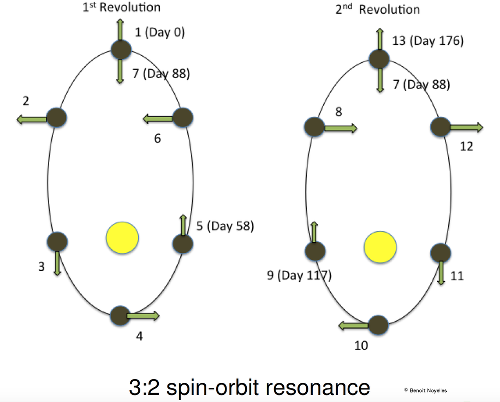As for the Moon, most of the natural satellites of the giant planets are thought to have a synchronous rotation. As a consequence, they on average show always the same face to their parent body. This is a dynamical equilibrium known as Cassini State. If we look closer at their rotation, we would see east-west librations, and it can be shown that their amplitude is a signature of the interior. They also have a significant obliquity, itself another signature of the interior. A theoretical simulation of the rotational dynamics assesses the link between the rotation and the interior, and measurements of the rotational quantities can infer the presence of a subsurface ocean. In particular, a subsurface ocean will decouple the rotation of the crust from the interior, and raise the amplitude of the librations.
I currently have three models of interior:
- Model 1: A fully rigid body. In this case, you have 3 rotational degrees of freedom: the longitudinal librations, the obliquity, and the polar motion. I have used this model for Janus, Epimetheus, Mimas...
- Model 2: A fluid core and a rigid mantle. Using a simple model (the Poincaré-Hough Model) for the dynamics of the fluid, you have only 4 degrees of freedom. Suitable for Io.
- Model 3: A global fluid layer (ocean, or outer core). In that case you have at least 3 degrees of freedom, i.e. three for orienting each of the two rigid layers.
We consider that an equilibrium state has been reached, the tides having driven the satellite to the synchronous rotation. So, the variations in the rotation are due to the gravitational forcing torque of other bodies, especially the parent one (i.e. the planet). Since the variations of this torque are due to the variations of the distance between the planet and the satellite, the oscillations in the rotational motion can be found in the orbital ephemerides of the considered body. To include these oscillations, I use numerical methods, first to propagate the equations of the rotational motions, and to make a spectral analysis of the solutions, that will allow us to get rid of free, parasital, oscillations, and to isolate every physical cause of the motion.
I am particularly proud of the study of Mimas' rotation. After a theoretical study, that considered different possible interiors, we were able to measure the rotational motion from Cassini data, and we detected a too large amplitude of libration. This discrepancy between the theory and the observation suggests that Mimas is not exactly as we thought, this amplitude of libration could be explained either by a subsurface ocean, or by a very elongated core composed of heavy elements. Check out the Science paper, some press releases: INSU (France), BBC (UK), Chicago Tribune (USA), Toronto Sun (Canada), Noticias 24 (Venezuela), Der Standard (Austria), University of Namur, the homepage of the first author Radwan Tajeddine, and the web page of the working group Encelade, without which the study would not have been conducted.
Mercury is the innermost planet of our Solar System and its rotation is a unique case of a 3:2 spin-orbit resonance,
i.e. 2 orbital revolutions around the Sun correspond exactly to 3 rotations.

Once more, this is a dynamical equilibrium, reached after damping of the initial rotation. Check out our explanation of this problem: the article, or if you prefer a poster containing the take-home message.
At the University of Namur, we have modelled the rotation of Mercury, in preparation of the Bepi-Colombo space mission. For that, we described the librations and obliquity for different models of interior. In particular, we proposed the most accurate model for the obliquity, in which we consider the secular variation of the orbital elements. More details on these studies in my seminar given in May 2013 in Rio Claro, SP, Brazil.
The future observation of the rotation by the radio-science experiment MORE, confronted with our theoretical modeling, should give new constraints on the interior of the planet. The American MESSENGER spacecraft allowed our knowledge of the planet to make a big step forward, and Bepi-Colombo will arrive at the right time to refine our understanding.